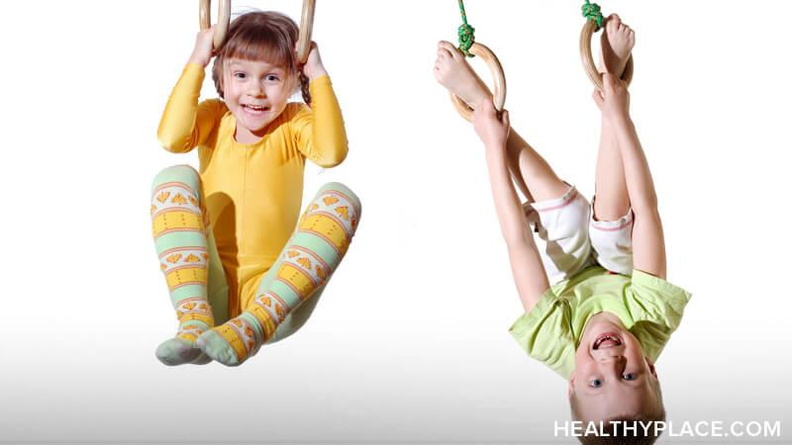Teaching Anticipation Skills to Children

How to teach children anticipation skills so they can manage their behavior and social skills in pressure situations.
Anticipating Situations to Use Social, Emotional and Behavior Skills
One of the many challenges faced by teachers, counselors, and parents when coaching emotional and social skills to children is how to foster the use of tools at the point when they are most needed, i.e., the point of performance. Many children can learn new skills when they are presented in a neutral environment, free of environmental pressures. But when the pressure heats up in the form of teasing classmates, teachers who ignore their raised hand, and temptations to misbehave, it can be hard for these children to summon the internal language needed to bring the skills "on-line."
In this second article addressing the classroom, I will focus upon how to coach "anticipation skills" so that children can prepare themselves to respond skillfully to environmental pressures and demands. This begins with an explanation by the "coach" (teacher, counselor, or parent) about the importance of anticipation. For the sake of practicality, narrative examples will illustrate a variety of ways that coaches can translate the coaching model into classroom application.(Classroom coaching is not necessarily conducted by a teacher, but only assumes that the instruction is being delivered to a large number of children.)
Helping Children Anticipate Situations and Problems
In this first illustration, a teacher offers a framework for introducing anticipation skills:
"Imagine that you are driving to a vacation with your family. It's going to take a few hours to get there, and none of you have been there before. Your parents have directions, but they need more to get to where you all want to go. Think about it. What else makes it possible for people to drive places they have never been before, and actually arrive there without getting lost? (pause for answers) Those of you who were thinking about road signs are right. Road signs help drivers because they direct us to our destinations. In order to do that, they give helpful information about how many miles it will take, how fast we should go, and just as important, what we should look out for along the way. Signs do that by telling us about upcoming twists and turns in the road, traffic lights ahead, and exits that we need to prepare for so that we can slow down and turn off where we need to."
This opening example uses metaphor to introduce the subject. Driving serves as a useful analogy because it requires practice, skill, and many relevant issues (laws, accidents, penalties, etc.) have counterparts in the interpersonal world of children (rules, conflict, consequences, etc.) Thus, classroom coaches may find it helpful to refer to the driving metaphor during coaching discussions. Next, I return to the narrative, with the teacher demonstrating how driving a car and being a kid have similarities:
"Signs allow us to anticipate what is down the road, so that when we get there we won't be too surprised. For instance, exit signs tell drivers to get ready to slow down and change lanes so that when it is time to turn it can be done safely. Anticipation means the ability to prepare ourselves for what's ahead of us, whether it be driving or anything else. Why is this important to kids? (pause for answers) Just like speed limits that change depending upon where we drive, kids go from place to place, and must deal with different rules in different places. In school, the rules change a little depending upon whether you're at recess, lunch, in the library, free time in class, or group lesson time at your desk. In each one of these places, the rules are a little different, whether it be talking, walking around, running around, raising your hand, and so on. Kids who anticipate what the rules are in these different places don't get into trouble as much and do a better job at steering themselves."
"Sometimes the rules in different places are posted on the walls, just like road signs. But most times, the rules are not posted and kids may not use their anticipation skills to keep themselves within the rules."
Once the classroom coach has brought the discussion to this point, it's time to explain how kids can improve their ability to anticipate what skills will be needed, and how to "hold them in mind" in order to be accessed when necessary. This latter concept refers to the ability to use mental scripts, or self-talk messages, that can be matched to the specific demands of the environment. The goal is for children to retrieve the right "mental road sign" for their present place, but this requires varying degrees of coaching assistance depending upon needs of each child:
"Let's go back to driving for a minute. Even though drivers use signs to get to where they want to go, there are many rules that do not appear on signs. So how do drivers know what to do? (pause for answers) If it starts to rain, there's no sign that tells them to turn on their windshield wipers. If there's a car pulled over on the side of the road, there's no sign that says slow down because somebody might need help. The rain and the car on the roadside are clues that drivers look out for. Drivers need to watch carefully for clues to anticipate what to do. And as clues appear, drivers give themselves directions about what to do. Inside their minds, drivers think about what they should do as they keep their eyes on the road.
"Most kids do the same thing. They learn how to look out for clues that help them stay within the rules. Clues help kids anticipate the rules. But if kids don't notice the clues, they can't use them to anticipate what to do. For instance, if a kid is clowning around and walks backward into the classroom, he won't see the teacher motioning for everyone to be quiet as they enter. Let's say he's laughing out loud about something he heard at recess, retelling the joke, and wham - he slams right into the teacher! Now, there's a kid in for a bumpy ride.
"But what if the kid had been looking out for clues as he walked back into the school building from recess? Most kids use walking-back-into-the-building as the clue to change behavior from clowning around to straightening out. If this boy had picked up that clue, he could use it to anticipate what to do. Maybe he could have directed himself, 'I'm back in school now. I've got to stop laughing and acting silly. I'll find a good time later to tell my friends about this joke.'""When kids pick up clues, they are much better at figuring out what to do. Walking into school is only one clue. Who knows other school clues that tell kids to give themselves directions?" (pause for answers)
At this juncture, coaches can offer a list of clues that help reinforce observation skills. Children are taught how clues may be auditory, visual, kinesthetic, or a combination. Auditory clues include verbal instruction, ringing of the school bell, singing of others, etc. Visual clues include facial expression, body posture, hand gestures, etc. Kinesthetic clues include walking into school, opening doors, etc. Depending upon the age of the group, others may be added to this list. Next, comes a discussion of the need for self-instruction:
"Once kids have picked up the important clues around them, it's important to know what to do. This can also be tricky for some kids who are not used to giving themselves the right kind of directions. Let's go back to our backwards walking friend for a moment: he first told himself, 'I've got to tell all my friends this incredibly funny joke, no matter what.' We all know that was the wrong direction to give himself because it didn't anticipate that he was going to crash right into the teacher and her rules."
"Giving yourself the right directions is kind of like figuring out the road signs that fit the place you are in at any given time. Sometimes the road signs are simple to figure out, such as "BE QUIET" or "SAY THANK YOU" or "RAISE YOUR HAND BEFORE YOU SPEAK." But sometimes the road signs are a lot harder to figure out and you need to pay much closer attention to the clues. For instance, "RESPECT THEIR PRIVACY" or "ACCEPT NO FOR AN ANSWER" or "I CAN'T ALWAYS EXPECT TO BE CALLED ON EVEN IF I KNOW THE RIGHT ANSWERS."
These road signs are harder to figure out for a lot of kids. They require that kids carefully look out for clues. Some clues come from watching the people around you and thinking about what keeps things going smoothly for them. Other clues come from thinking about what happened the last time you were dealing with this kind of situation. The way things did or did not work out in the past gives kids clues about what they should direct themselves to do the next time around."
Coaches can proceed from this point with a discussion of typical self-instruction messages that children can employ for improved social and emotional functioning.
The text from Parent Coaching Cards can be used as examples and/or as a springboard for coaching sessions targeting specific skill areas. Once the coach has chosen a finite number (between 5-10) to begin with, children can be made aware of which self-instruction messages fit with which situations. Increased reinforcement will also come from teachers encouraging children to figure out in advance of transitions, which skills need to be brought to mind. Social and emotional skills can also be woven into discussions within subject areas (social studies, reading, science. etc.) that reflect the skills in question, i.e., teachers can ask children which skills were displayed by Thomas Edison, Martin Luther King, etc.
APA Reference
Richfield, S.
(2019, August 5). Teaching Anticipation Skills to Children, HealthyPlace. Retrieved
on 2025, December 18 from https://www.healthyplace.com/parenting/the-parent-coach/teaching-anticipation-skills-to-children


